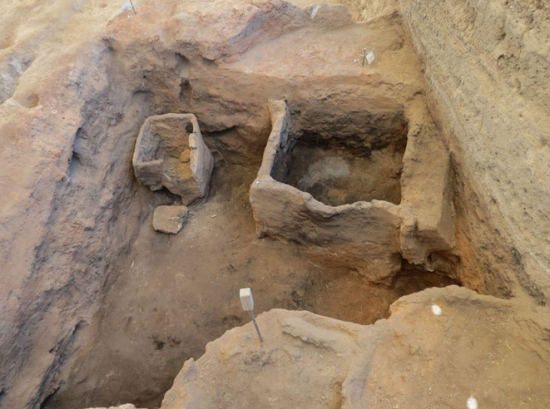Last grain stores at Çatalhöyük found
Source - http://www.pasthorizonspr.com/index.php/archives/01/2014/last-grain-stores-at-catalhoyuk-found
Pomieszczenie na zboże sprzed ponad 8 tys. lat odkryli Polacy w Turcji
Source - http://naukawpolsce.pap.pl/aktualnosci/news,398652,pomieszczenie-na-zboze-sprzed-ponad-8-tys-lat-odkryli-polacy-w-turcji.html
A cache of perfectly preserved Neolithic grain, the largest so far known in the Middle East, has been uncovered by Polish archaeologists working at Çatalhöyük in Central Turkey.
Çatalhöyük is one of the centres of urbanisation of the earliest farming communities and one of the most famous archaeological sites in the world.
”In a small room with an area of approximately 7 square metres we discovered four containers formed from packed clay containing a large quantity of multi-row grains” – explained Prof. Arkadiusz Marciniak from the Institute of Prehistory in Poznan.
Well preserved
In total, between the two grain hoppers that were excavated the archaeologists recovered almost 5kg of grain. Such an amount in a well preserved state is of great importance to the investigation of early agriculture.
Archaeobotanical research has shown that it was an extinct species of wheat – popular in Neolithic times in the Middle East and Europe. The room in which the discovery was made lay in the north-eastern part of the house group – which consisted of residential buildings constructed around 8,200 years ago.

Containers for barley in the room where the stored grain was discovered. Image: A. Marciniak
A period of decline
The find dates to a period when this once thriving settlement was in decline and inhabited by only a single household. The entire complex of structures will be fully investigated over the coming research seasons.
It is clear that the storage room in which the grain bins were located had burned down with carbonised grains suggesting a swift and hot fire. In addition to the grain bins, the archaeologists also recovered several ceramic vessels.
Çatalhöyük is located in the southern part of the Anatolian Plain in central Turkey and excavations began in the 1960s under the direction of James Mellaart. The research resumed in 1993 under an international team headed by Professor Ian Hodder of Stanford University with Polish archaeologists joining the project in 2001.
Çatalhöyük was inhabited continuously for around 1200 years between 7200 and 6000 BCE.
In its heyday, this densely built-up residential area covered several acres and had a population of up to 6000 inhabitants.